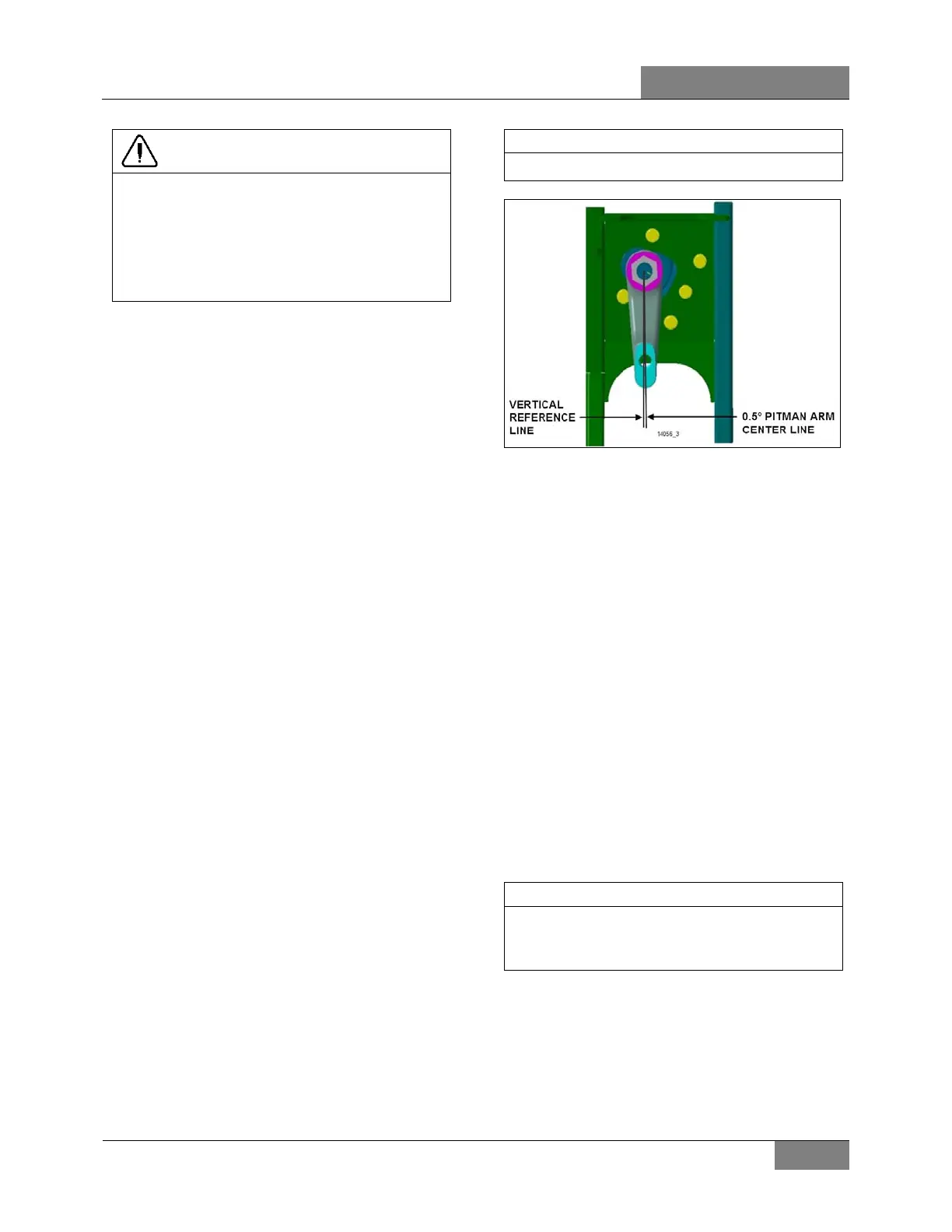SECTION 14: STEERING
PA1621 Maintenance Manual All Series | January 2017
29
CAUTION
Once the perfect shim combination is
achieved, always install new Stover nuts
because the self-locking effect is lost after
tightening and loosening of the nut. It is
recommended to punch marks to detect
loosening of the nuts during future visual
inspections.
15.1.4 Front Wheel Toe-In
Toe-in is measured from the center of the tire
treads. Measurements at the front and rear of
the tires must be made at the same height from
the floor. Incorrect toe-in results in excessive tire
wear and steering instability with a tendency to
wander.
Toe-In Check
1. Check the camber adjustment and adjust if
necessary.
2. Hoist the front of the vehicle and spin the
wheels marking the centerline of the tire
treads.
3. Place the wheels in the straight ahead
position and lower the vehicle to rest on the
floor.
4. Roll the vehicle ahead several feet. This
removes any slack caused by looseness in
the wheel bearings or steering connections.
5. Check the distance between the tire
centerlines at the front and rear of the front
tires. These two measurements must be
made at the same height above the floor.
The front measurement must be 3/32 ±1/32
of an inch less than the rear measurement.
Toe-In Adjustment
1. Loosen the tie rod clamp bolts.
2. Using a pipe wrench, turn the tie rod tubes
to obtain the toe-in measurement specified
in step 5 under paragraph "Toe-in Check".
3. Tighten the tie rod clamp bolts and recheck
toe-in.
4. Check that the angular relationship of the
pitman arm to the steering gear is as shown
in Figure 34.
NOTE
Use only tie rods to adjust toe-in.
FIGURE 34: IFS PITMAN ARM ALIGNMENT
15.1.5 Front Wheel Caster
Positive caster is the inclination of the top of the
kingpins toward the rear of the vehicle. Negative
or reverse caster is the inclination of the
kingpins toward the front of the vehicle. This
vehicle is designed with positive caster. The
purpose of caster is to provide steering stability
by keeping the wheels in a straight ahead
position.
Caster variations may be caused by bent upper
suspension A-arm, lower suspension A-arm, or
kingpin housing. Caster should be adjusted with
shims. Precision instruments should be used to
measure caster. Shim bell crank and idler arm to
adjust caster (Figure 37).
Variations from the specified caster will affect
steering stability, cause wandering, wheel
shimmy, and reduce steer re-centering when
pulling out of curves.
NOTE
On Independent Front Suspension, caster on
right wheel must be equal or greater than
caster on left wheel, without exceeding 0.3°.
15.1.6 Major Damage
If the suspension has sustained major damage,
it may be necessary to shim the bell crank and
the idler arm to avoid the bump steer or roll
steer. Moreover refer to paragraph "Front End
Alignment".

